Perhaps one of the most important products to the future of chip design was shown at Intel Vision 2022. At the show, the company had two silicon photonics products on display. These are products the company has shown before, but they are very important for the future of Intel’s chips.
Important Silicon Photonics Future at Intel Vision 2022
The first product is the 400GbE silicon photonics transceiver. We do not have one of the Intel units, but we do have some of the FS 400GbE silicon photonics modules that we will have a review of. Since we will probably get in trouble opening those modules up, we can take a look inside Intel’s modules.
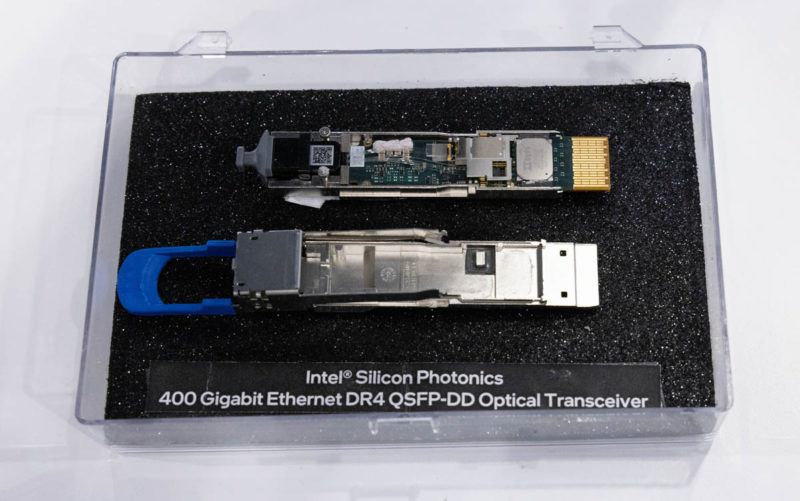
Perhaps the more interesting demo product is this one. While the QSFP-DD module is a 400GbE module, this is a 4x 400Gbps module.
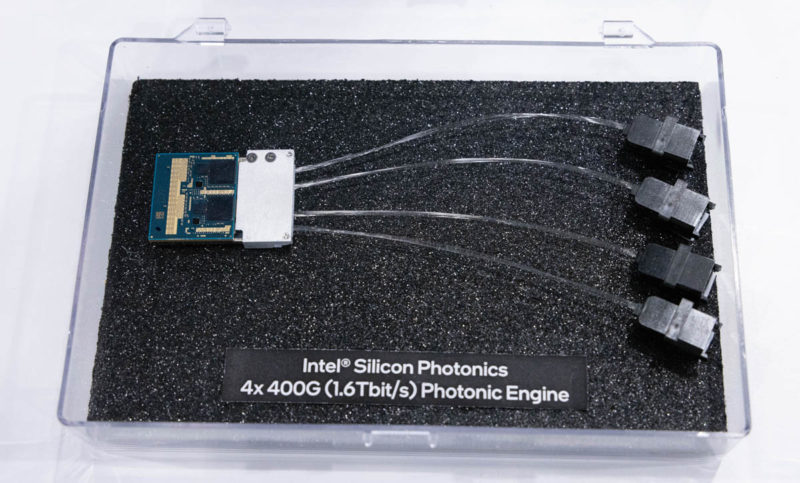
This 1.6Tbps module we were told was more something for the company’s co-packaged optics program. We did a video on that just before the pandemic closed everything down.
While that is interesting, perhaps the more important is what it means for future chips. Take a look at the Intel Ponte Vecchio GPU and the tiles dedicated to HBM and interconnect.
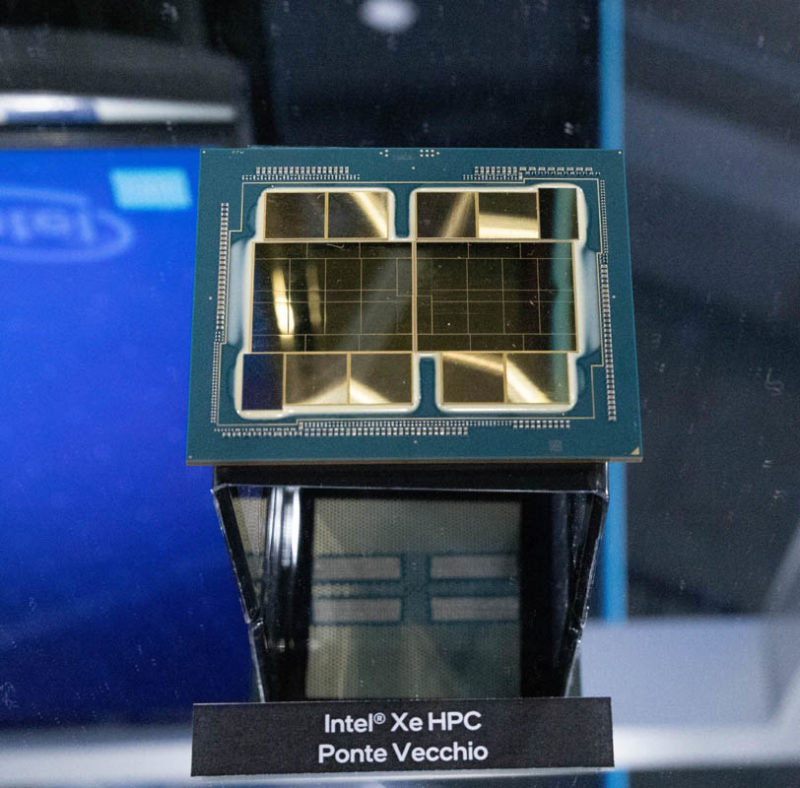
Likewise, here is the Intel Sapphire Rapids HBM chip that will power the new Aurora supercomputer along with the Ponte Vecchio GPUs. Again, we can see significant space dedicated to the HBM.
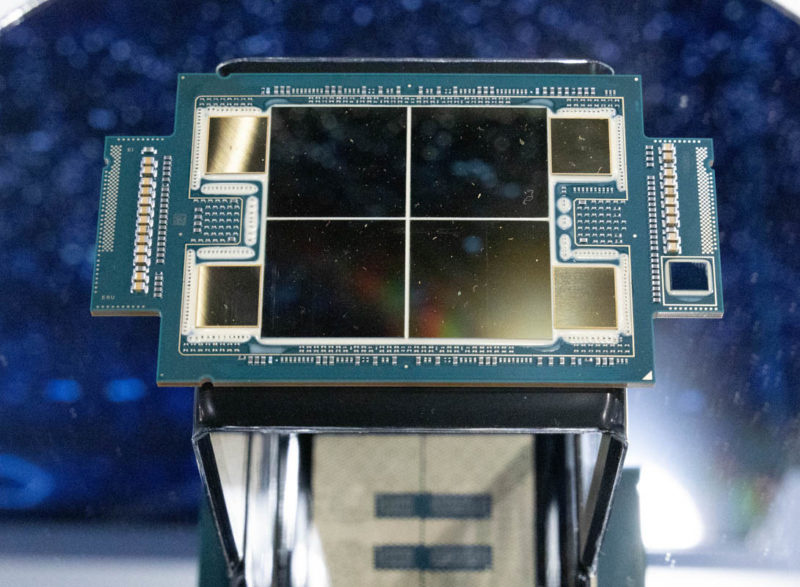
The reason that 1.6Tbps module is so important is because it is a much higher bandwidth module than the QSFP-DD module in a smaller space. Going back to Raja’s chip (Doritos) notes from SC21, there is the “Light Bender (SiPh)” line in the 24-25 timeframe.

We have heard a number of folks talk about Light Bender as an alternative to the 400Gbps QSFP-DD connector. Instead, it is probably more like the 1.6Tbps module, where multiple fibers are carrying high-speed traffic. Imagine moving the HBM off-package where one is not constrained by the package size and cooling requirements beyond the silicon photonics engine. While Ponte Vecchio is amazing for what is on chip, what happens when everything does not need to be on a single chip? That is Light Bender.
Final Words
Silicon photonics is one of those topics that we have heard about for well over a decade. We are now hitting the power constraints that will force a change. On the packaging side, the ability to assemble packages with tiles from different process nodes and fabs means that Intel is able to design an interface tile, and then re-use it later. That is what can unlock a different scale of chips going forward.
We have been focusing a lot of coverage lately on Intel’s designs that will be coming out later in Q3 2022 through early 2023. If you are interested in the future of Intel’s designs it may be worth watching that little video. Silicon photonics are here today being used in hyperscale data centers. Now it is about proliferation and how it will change chip designs in 2-3 years. The Intel Vision 2022 demo may have seemed mundane, but there are big implications of showing Intel is shipping silicon photonics today in volume, and the direction it is going.

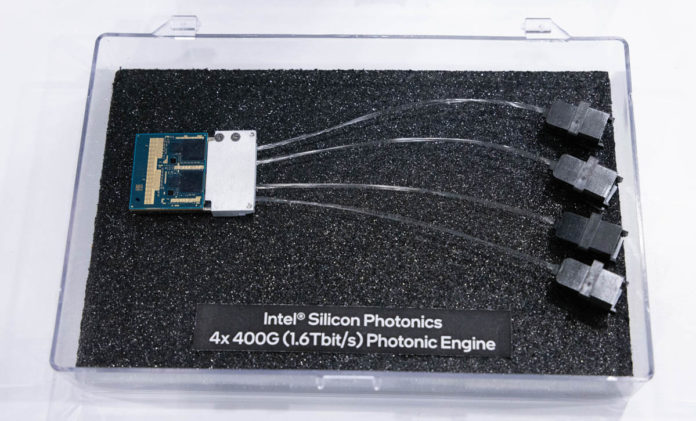



Wow, interesting silicon photonics “Raja’s Chip Notes.” smart next time I buy Dorito’s, I will for sure remember this.
Although Intel calls it a ‘1.6T Photonic engine’ is it really an 800G (2x400G) transceiver demo. Please read Intel’s paper in IEEE Journal of Lightwave Technology published in 2021 v39 n4 (Fathololoumi et al.). In that paper they describe how this package actually contains two photonic engines but for some undisclosed reason, only 4 channels (100G each) of each engine are active simultaneously.